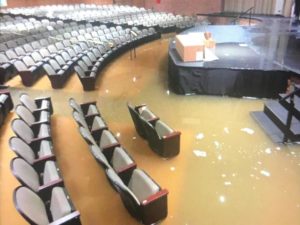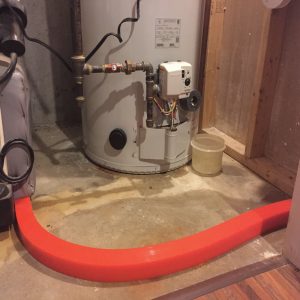“My house is flooded”
That’s a very popular quote when dealing with severe weather but at the same time it’s not very descriptive. A lot of the time we just say our overall house is flooding and then proceed to dive into the details of specific locations within our flooded homes.
Being prepared for potential flooding helps decrease the chances of severe flood damage by an overwhelming amount. However, knowing where to begin is one of the more difficult parts of flood preparation. Here we’re going to identify at the most popular areas where flood water is entering your home.
Doorways
One of the most common points of entry for flood water is through the doorways into your home. With high rising water levels that come with flooding, if they reach your doorway and there is no protection in place it could mean serious damage to your home.
Doorway flooding is so common because of the lack of a seal most doors have a the bottom. It’s the same concept as dealing with a draft of cool air by the doorway only with rushing flood water. Entry way flood protection can seem overwhelming but there are effective solutions out there to protect your home.
For example, the Flood Gate provides doorway flood protection up to 26 inches high. The Flood Gate is a sturdy and reliable flood barrier with a neoprene sleeve fitted to it. The Flood Gate doesn’t require additional alterations and it installs in just minutes.

Flood Gates fit doorways anywhere from 30″ to 50″ wide and for larger doorway concerns there are stanchion sets available so that you can connect multiple units together.
Learn more about the Flood Gate right HERE
Garages
Much like doorways, garages are extremely susceptible to high volumes of flood water. Since garages are set right on the same level as oncoming flood water it is important to have adequate protection that can cover the length of your garage opening.
A perfect solution for garage flood protection is to have a set of Flood Barriers on hand for when the time comes.
Flood Barriers are water-activated alternatives to traditional sandbags with specific lengths to suit your flood protection needs. Flood Barriers come in lengths of 5 feet, 10 feet, and 17 feet.

Flood Barriers swell and gel when contact by water and rise to provide adequate flood protection. Barriers can also be stacked on top of each other to increase the height of protection.
If you want to check out more about Flood Barriers click right HERE
Foundation Cracks / Leaking Pipes
When preparing for a flood always make sure to check out your basement and any pipes that are running water through them.
Surveying your basement can be tough but thoroughly inspect all aspects of the walls and check for foundation cracks that might allow flood water to make its way into your basement. In terms of indoor basement flood solutions there are many effective methods to help minimize the damage depending on how much water has entered your home.
If you start to see leaking in your basement make sure to have a variety of indoor flood protection products that can meet your needs.
The Insta-Dam is a flexible polyurethane dam that controls, contains and diverts problematic water or fluids. The Insta-Dam is 4 feet long and protects up to 2 inches high.

Another easy solution is to keep some Wick Up Berms on hand. Wick Up Berms are indoor water barriers that are water-activated. Berms absorb problematic water and inflate into a protective barrier to help control and contain problem water.

Flooding can cause some serious damage to your home and it only takes one storm to do so. The best way to combat flash flooding is to be as prepared as possible before disaster strikes. Search for items that have a long shelf life and can be stored easily.
By doing this you are able to deploy necessary products as quick as possible. If you need help finding effective solutions make sure to visit our website HERE



